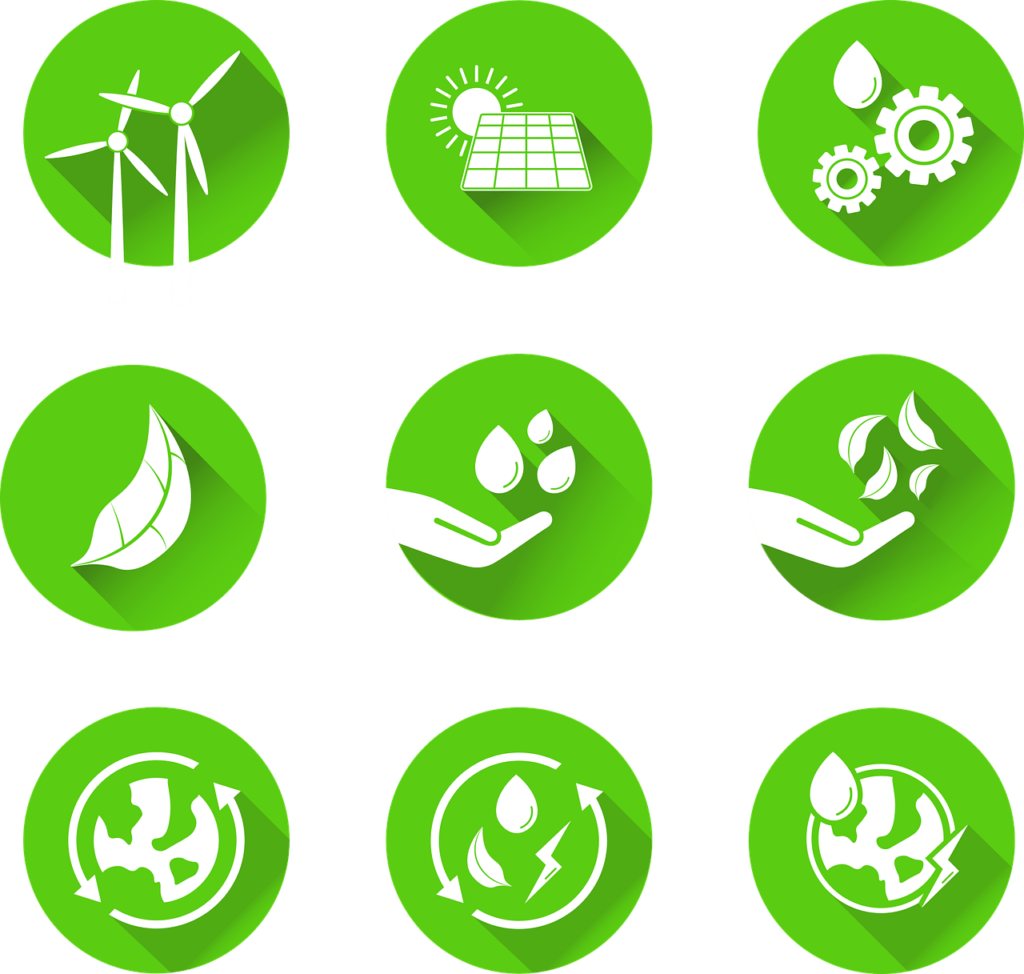Plastic food storage has become an integral part of our daily lives, providing a convenient and cost-effective solution for preserving and transporting our meals. As we strive towards a more sustainable future, there has been a growing demand for innovative design approaches that enhance the sustainability of these containers. In this article, we will explore the emerging trends in plastic food storage design that aim to minimize environmental impact without compromising functionality, ensuring that our meals can be stored and enjoyed responsibly for years to come.

This image is property of pixabay.com.
Sustainable Material Choices
Bioplastics
Bioplastics are a sustainable alternative to traditional plastics that are derived from fossil fuels. These plastics are made from renewable resources such as plants, corn starch, and sugarcane, making them biodegradable and compostable. Bioplastics offer numerous environmental benefits, as they reduce the reliance on non-renewable resources and have a lower carbon footprint. By choosing bioplastics for food storage containers, you can contribute to reducing plastic waste and promoting a more sustainable future.
Recycled Plastic
Recycled plastic is another excellent option for sustainable food storage. Instead of using virgin plastics, recycled plastic is made from post-consumer or post-industrial waste. By utilizing recycled plastic, you can help divert plastic waste from landfills and reduce the demand for new plastic production. Recycled plastic is just as durable and functional as traditional plastic and offers a way to minimize the environmental impact of food storage.
Silicone Alternatives
Silicone is a versatile material commonly used in food storage products due to its heat resistance, durability, and flexibility. However, silicone is not biodegradable and can pose challenges for recycling. Fortunately, there are now silicone alternatives available in the market that are made from sustainable materials such as natural rubber or food-grade stainless steel. These alternatives provide similar benefits to silicone while also being more eco-friendly.
Minimizing Plastic Waste
Reusable Containers
One of the most effective ways to minimize plastic waste in food storage is by using reusable containers. Instead of relying on disposable plastic bags or single-use containers, opt for durable and washable containers made from materials like glass, stainless steel, or BPA-free plastic. These containers can be used repeatedly, reducing the need for single-use plastics and contributing to a more sustainable food storage system.
Bulk Purchasing
Buying in bulk is not only cost-effective but also reduces packaging waste. When purchasing food items in large quantities, you can minimize the amount of packaging materials used per serving. Look for stores that offer bulk sections or consider joining a local co-op where you can purchase items in bulk and bring your own reusable containers. By bulk purchasing, you can significantly reduce the amount of plastic waste generated from individual packaging.
Composting Options
Composting is a fantastic way to dispose of food scraps and food containers made from biodegradable materials. Instead of sending these materials to landfills, where they can take years to decompose, composting allows organic waste to break down naturally and become nutrient-rich soil. Look for compostable food storage options made from materials like bioplastics or plant fibers, and ensure they are certified compostable to ensure proper decomposition in a composting facility.

This image is property of pixabay.com.
Innovative Packaging Solutions
Edible Packaging
Edible packaging is an emerging trend in sustainable food storage. It involves using edible materials, such as seaweed or starch-based films, to wrap food items. This packaging not only reduces plastic waste but can also be consumed or easily biodegraded. Edible packaging offers a unique and eco-friendly solution to minimize packaging waste while still ensuring food safety and freshness.
Minimalist Packaging
Minimalist packaging focuses on reducing excess packaging materials and opting for more simple and streamlined designs. By eliminating unnecessary layers or components, minimalist packaging helps minimize waste and reduce the overall environmental impact. Look for products that come with minimal packaging or choose brands that prioritize sustainability in their packaging choices.
Biodegradable Wrapping
Biodegradable wrapping, such as compostable paper or plant-based films, offers an eco-friendly alternative to traditional plastic wraps. These materials break down naturally in composting facilities, reducing the environmental impact and ensuring a more sustainable food storage practice. Opt for biodegradable wraps when storing leftovers or packing lunches, and be mindful of their proper disposal to maximize their environmental benefits.
Extended Shelf Life Techniques
Vacuum-Sealing
Vacuum-sealing is a technique that involves removing air from a food storage container to create a tight seal. By eliminating oxygen, vacuum-sealing can significantly extend the shelf life of food items, preserving their freshness and taste. This technique is particularly beneficial for perishable foods like fruits, vegetables, and meats. By using a vacuum sealer, you can reduce food waste and minimize the need for single-use plastic bags or containers.
Freezing Techniques
Freezing is another effective method to extend the shelf life of various food items. By freezing fruits, vegetables, and meats at their peak freshness, you can preserve their nutrients and flavors for longer periods. Proper packaging is crucial when freezing food, as it helps prevent freezer burn and maintain the food’s quality. Consider using reusable containers or freezer bags made from sustainable materials for eco-friendly freezing practices.
Preservation Technologies
Advances in food preservation technologies offer innovative ways to extend the shelf life of food items without the need for excessive packaging or harmful chemicals. Techniques such as modified atmosphere packaging (MAP) or high-pressure processing (HPP) help maintain food quality and safety while minimizing waste. These technologies can be particularly useful for pre-packaged meals or fresh produce, ensuring less food goes to waste and promoting sustainability in food storage.

This image is property of pixabay.com.
Encouraging Proper Food Storage Practices
Labeling and Rotation Systems
One of the keys to reducing food waste is proper food storage organization. Labeling and rotation systems can help ensure that food items are used before they expire, minimizing waste. When storing food, use labels to mark the date of purchase or expiration on containers, bags, or jars. Additionally, adopt a first-in, first-out approach, where older items are used before newer ones, to prevent food from getting forgotten and wasted.
Optimal Temperature Awareness
Understanding the optimal storage temperature for different food items is essential to maintain their freshness and prevent spoilage. Make sure your refrigerator and freezer are set at the appropriate temperatures: below 40°F (4°C) for the refrigerator and 0°F (-18°C) for the freezer. This helps prolong the shelf life of perishable foods and reduces the need for premature disposal. Investing in a refrigerator thermometer can ensure that the temperatures are consistently within the safe range.
Proper Portioning
Overestimating portion sizes can lead to excess food waste. To avoid this, practice proper portioning when storing food. Use smaller containers or section off larger containers to separate portions in advance. By storing appropriate portion sizes, you can reduce the likelihood of leftovers going to waste and make the most of your food supply. Proper portioning not only promotes sustainability but also helps manage a healthy diet.
Eliminating Harmful Chemicals
BPA-Free Options
Bisphenol A (BPA) is a chemical commonly used in the production of plastics and can leach into food and beverages, posing potential health risks. Opting for BPA-free food storage containers helps eliminate exposure to this harmful chemical. Look for products specifically labeled as BPA-free or opt for alternative materials such as glass or stainless steel, which do not contain BPA.
Phthalate-Free Alternatives
Phthalates are chemicals used to soften plastics, and they are also associated with potential health risks. Choose food storage options that are specifically labeled as phthalate-free to avoid exposure to these chemicals. Similarly to BPA-free options, glass or stainless steel containers are excellent alternatives that do not contain phthalates.
Toxin-Free Materials
When selecting food storage containers, be mindful of potential toxins that can be present in certain materials. Avoid containers made from polycarbonate plastics, which may contain harmful chemicals like BPA. Instead, opt for materials that have been tested and certified as toxin-free, such as glass, stainless steel, or food-grade silicone alternatives.
Promoting Eco-Friendly Manufacturing Processes
Energy Efficiency Measures
Manufacturers can adopt energy-efficient practices to reduce their carbon footprint. Investing in energy-efficient machinery, optimizing production processes to minimize energy consumption, and utilizing renewable energy sources are some ways manufacturers can promote sustainability. By supporting brands that prioritize energy efficiency, you contribute to a more environmentally friendly manufacturing industry.
Reducing Water Usage
Water is an essential resource in the manufacturing process, and reducing water usage is key to sustainability. Manufacturers can implement water-saving measures such as recycling and reusing water, implementing efficient water management systems, and investing in water-efficient technologies. By supporting brands that prioritize water conservation, you encourage more sustainable manufacturing practices.
Waste Management Programs
Implementing effective waste management programs is crucial for manufacturers to minimize their environmental impact. This includes initiatives like recycling production waste, reducing packaging waste, and implementing proper disposal practices. By choosing products from manufacturers with comprehensive waste management programs, you support a more sustainable and responsible supply chain.
Educating Consumers on Sustainable Food Storage
Informative Packaging Labels
Informative packaging labels play a vital role in educating consumers about sustainable food storage practices. Look for products that provide clear instructions on how to properly store and dispose of the packaging. Labels can include information on compostability, recyclability, or guidance on using the product in a sustainable manner. By reading and understanding these labels, consumers can make informed choices and contribute to sustainable food storage.
Public Awareness Campaigns
Public awareness campaigns play a crucial role in promoting sustainable food storage practices. These campaigns raise awareness about the environmental impact of plastic waste and educate consumers on eco-friendly alternatives and proper storage techniques. By participating in or supporting these campaigns, individuals can learn valuable information and be motivated to adopt more sustainable habits.
Green Packaging Symbols
Packaging that features green symbols or certifications can guide consumers towards more sustainable choices. Look for symbols like the Mobius Loop (for recyclability), the Compostable logo (for compostability), or certifications from organizations such as the Forest Stewardship Council (FSC) or the Marine Stewardship Council (MSC). These symbols and certifications indicate that the packaging or product meets specific sustainability criteria, helping consumers make eco-conscious decisions.
Collaboration Between Manufacturers and Retailers
Sustainable Product Certification
Collaboration between manufacturers and retailers is essential in promoting sustainable food storage practices. Manufacturers can seek sustainable product certifications, such as the USDA Organic label or the B Corporation certification, to demonstrate their commitment to sustainable practices. Retailers can prioritize carrying products with these certifications, making it easier for consumers to find environmentally friendly options.
Incentives for Eco-Friendly Practices
Manufacturers and retailers can collaborate to create incentives for eco-friendly practices. This can include discounts or rewards for choosing products with sustainable packaging, implementing recycling programs, or reducing waste. By working together, manufacturers and retailers can encourage each other and consumers to prioritize sustainability in food storage choices.
Transparency in Supply Chains
Transparency in supply chains is crucial for promoting sustainable food storage. Manufacturers and retailers should disclose information about the sourcing of materials, production processes, and waste management practices. This transparency allows consumers to make informed choices and support companies with sustainable and ethical practices. By demanding transparency, consumers can drive positive change in the industry and promote sustainable food storage practices.
Government Regulations and Policies
Mandatory Recycling Programs
Government regulations can play a significant role in promoting sustainable food storage practices. Implementing mandatory recycling programs for plastic packaging or incentivizing recycling can significantly reduce plastic waste. By requiring manufacturers and retailers to provide recycling options or establishing comprehensive recycling systems, governments can ensure that plastic waste is properly managed and recycled.
Limits on Single-Use Plastics
Government policies can also limit the use of single-use plastics in food storage. By banning or heavily taxing single-use plastic bags, cutlery, or straws, governments encourage the use of more sustainable alternatives. These policies promote the adoption of reusable containers and packaging materials that have a lower environmental impact, fostering a more sustainable food storage culture.
Tax Incentives for Sustainable Packaging
Governments can provide tax incentives or grants to manufacturers and retailers that adopt sustainable packaging practices. By offering financial benefits to those who prioritize sustainable materials, governments encourage the adoption of eco-friendly food storage solutions. Tax incentives can help offset the costs associated with transitioning to sustainable options and motivate businesses to embrace more environmentally friendly practices.
In conclusion, enhancing sustainability in plastic food storage requires a multi-faceted approach. By making conscious choices in material selection, packaging solutions, and food storage practices, individuals, manufacturers, retailers, and governments can collectively contribute to minimizing plastic waste and promoting a more sustainable future. By embracing these strategies, you can play an active role in reducing the environmental impact of food storage and fostering a more eco-friendly society.
